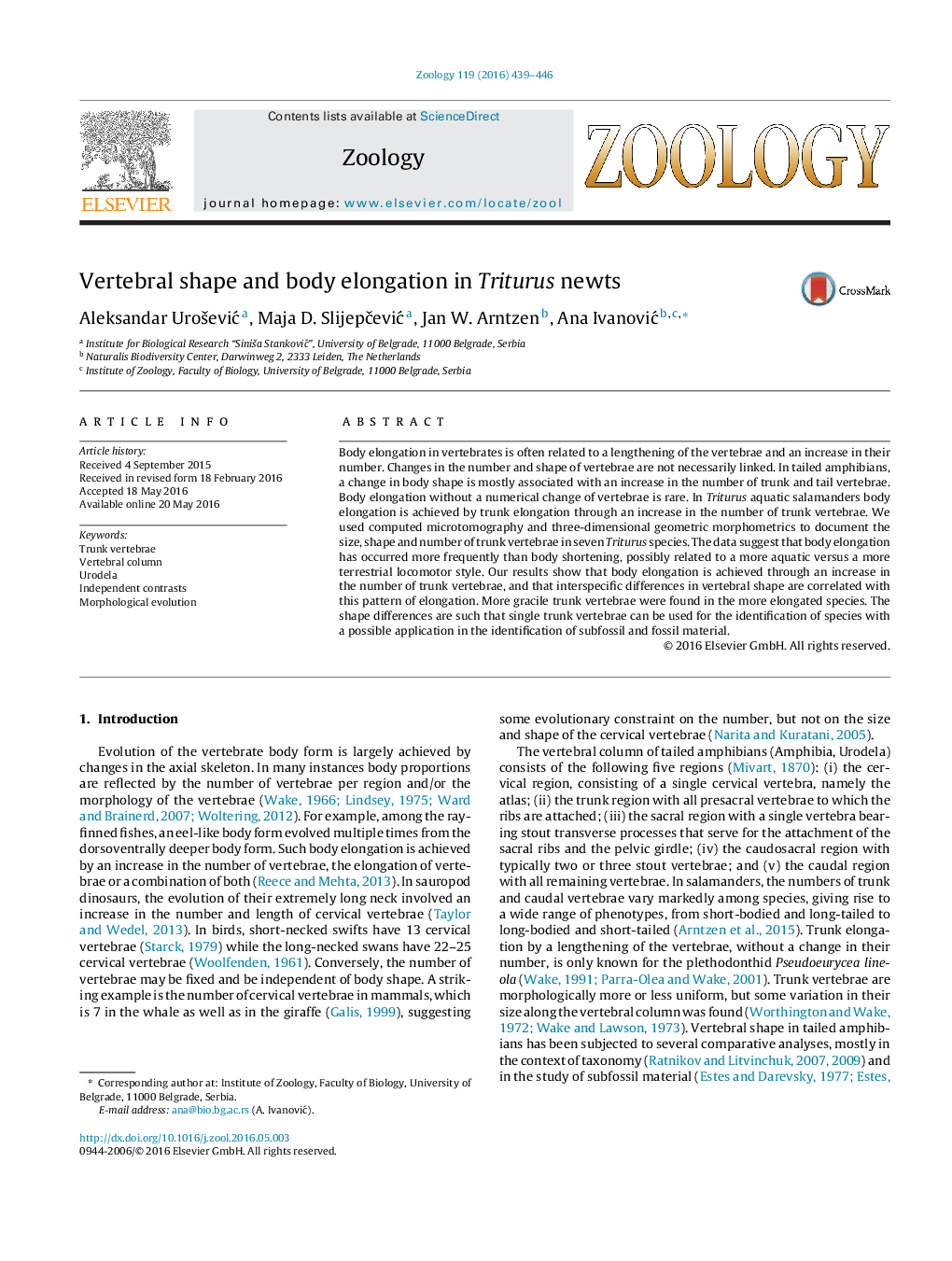| Article ID | Journal | Published Year | Pages | File Type |
|---|---|---|---|---|
| 5586576 | Zoology | 2016 | 8 Pages |
Abstract
Body elongation in vertebrates is often related to a lengthening of the vertebrae and an increase in their number. Changes in the number and shape of vertebrae are not necessarily linked. In tailed amphibians, a change in body shape is mostly associated with an increase in the number of trunk and tail vertebrae. Body elongation without a numerical change of vertebrae is rare. In Triturus aquatic salamanders body elongation is achieved by trunk elongation through an increase in the number of trunk vertebrae. We used computed microtomography and three-dimensional geometric morphometrics to document the size, shape and number of trunk vertebrae in seven Triturus species. The data suggest that body elongation has occurred more frequently than body shortening, possibly related to a more aquatic versus a more terrestrial locomotor style. Our results show that body elongation is achieved through an increase in the number of trunk vertebrae, and that interspecific differences in vertebral shape are correlated with this pattern of elongation. More gracile trunk vertebrae were found in the more elongated species. The shape differences are such that single trunk vertebrae can be used for the identification of species with a possible application in the identification of subfossil and fossil material.
Related Topics
Life Sciences
Agricultural and Biological Sciences
Animal Science and Zoology
Authors
Aleksandar UroÅ¡eviÄ, Maja D. SlijepÄeviÄ, Jan W. Arntzen, Ana IvanoviÄ,
